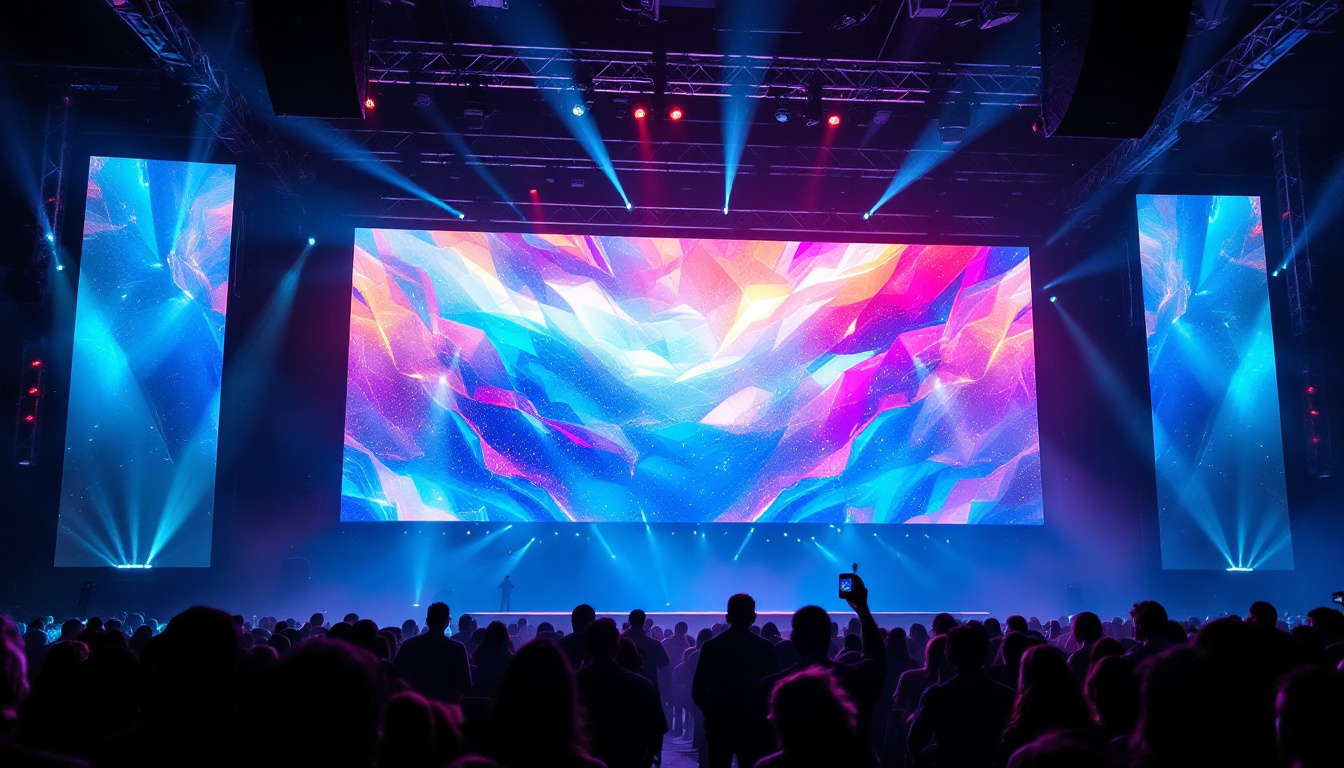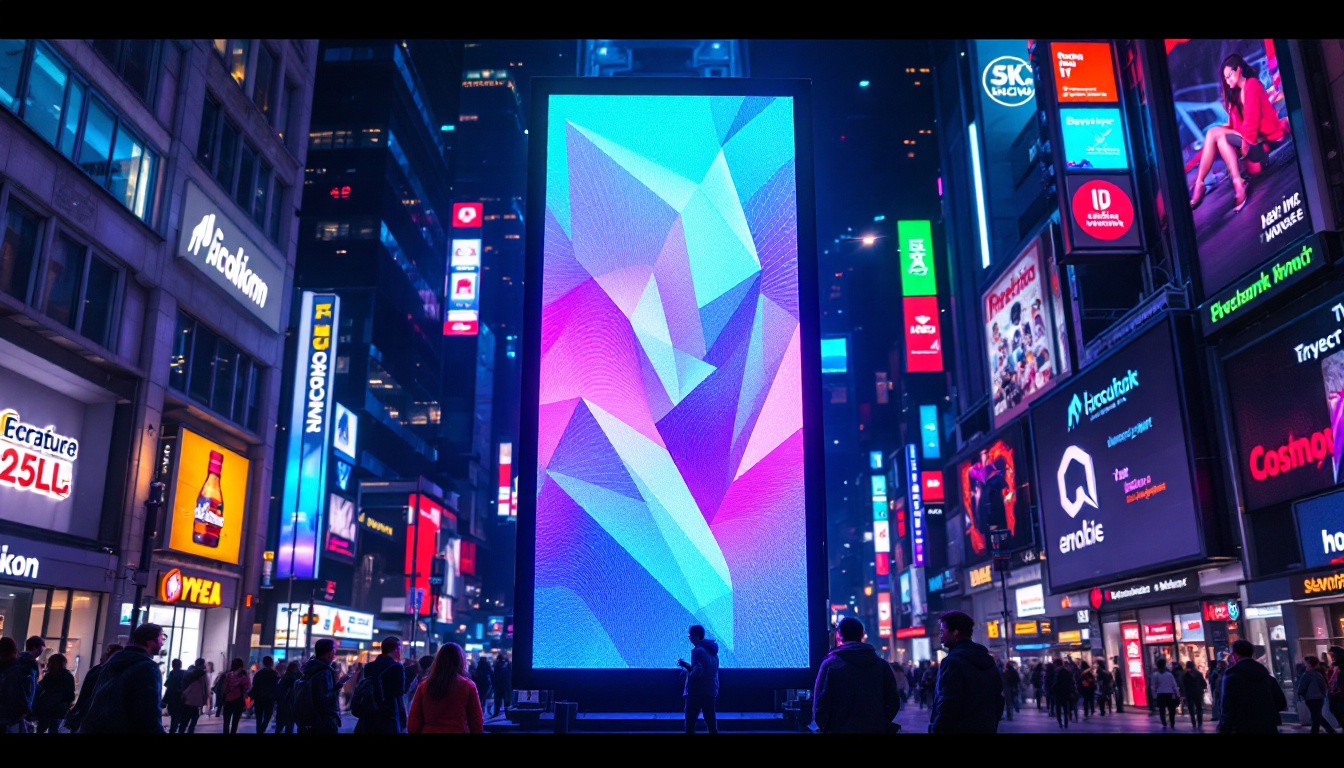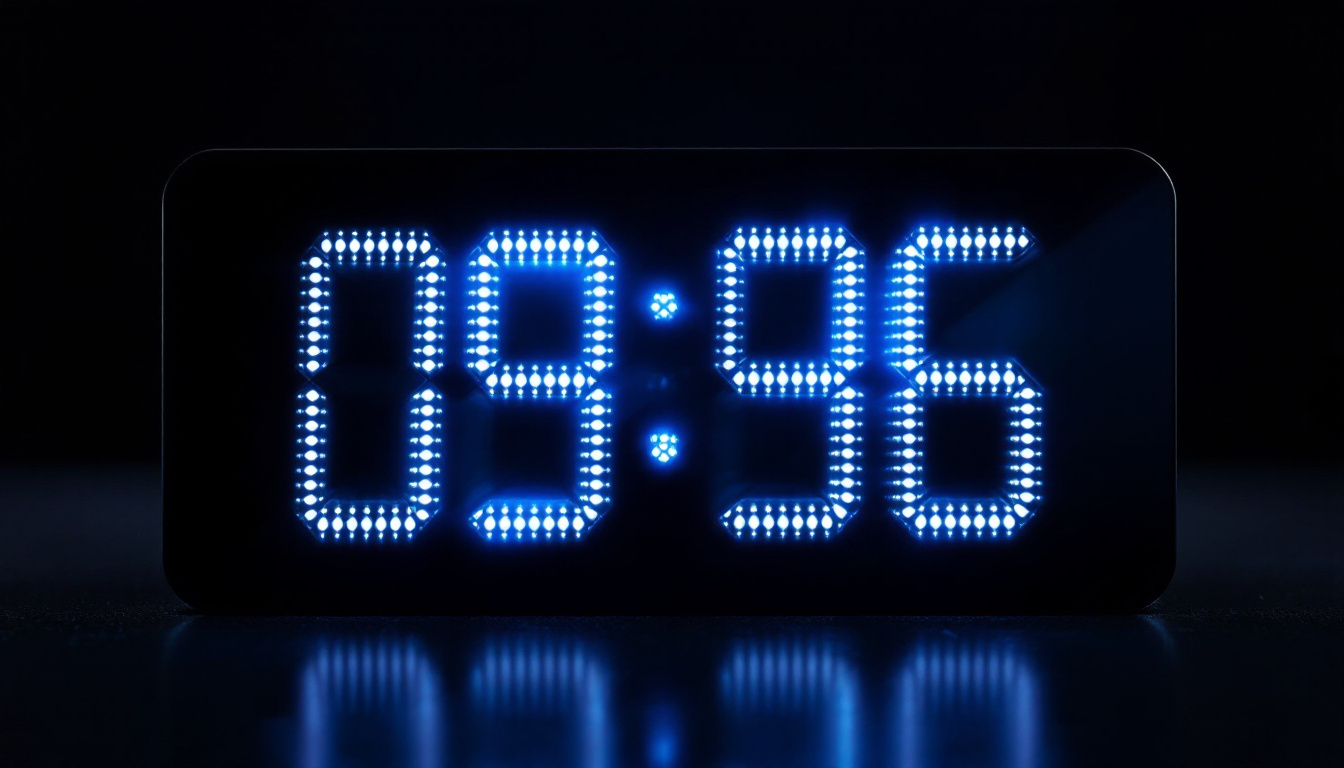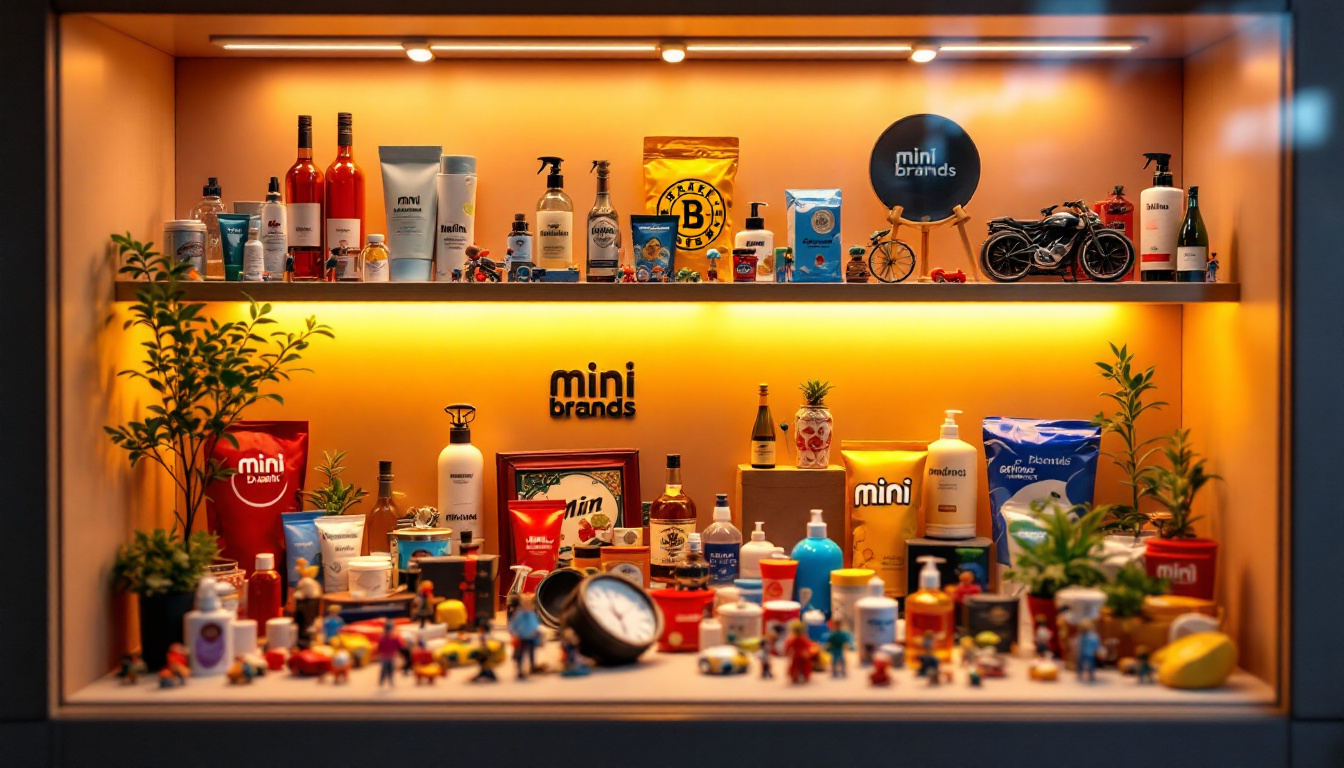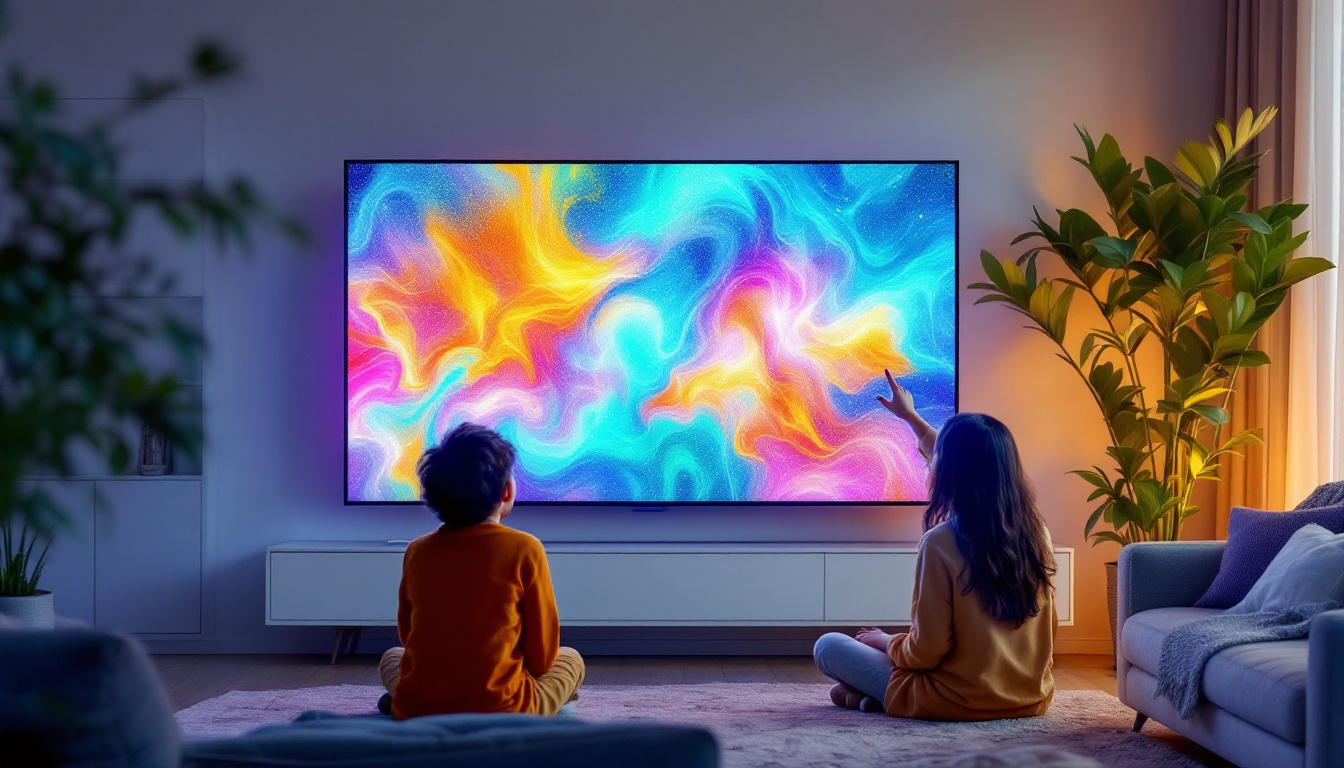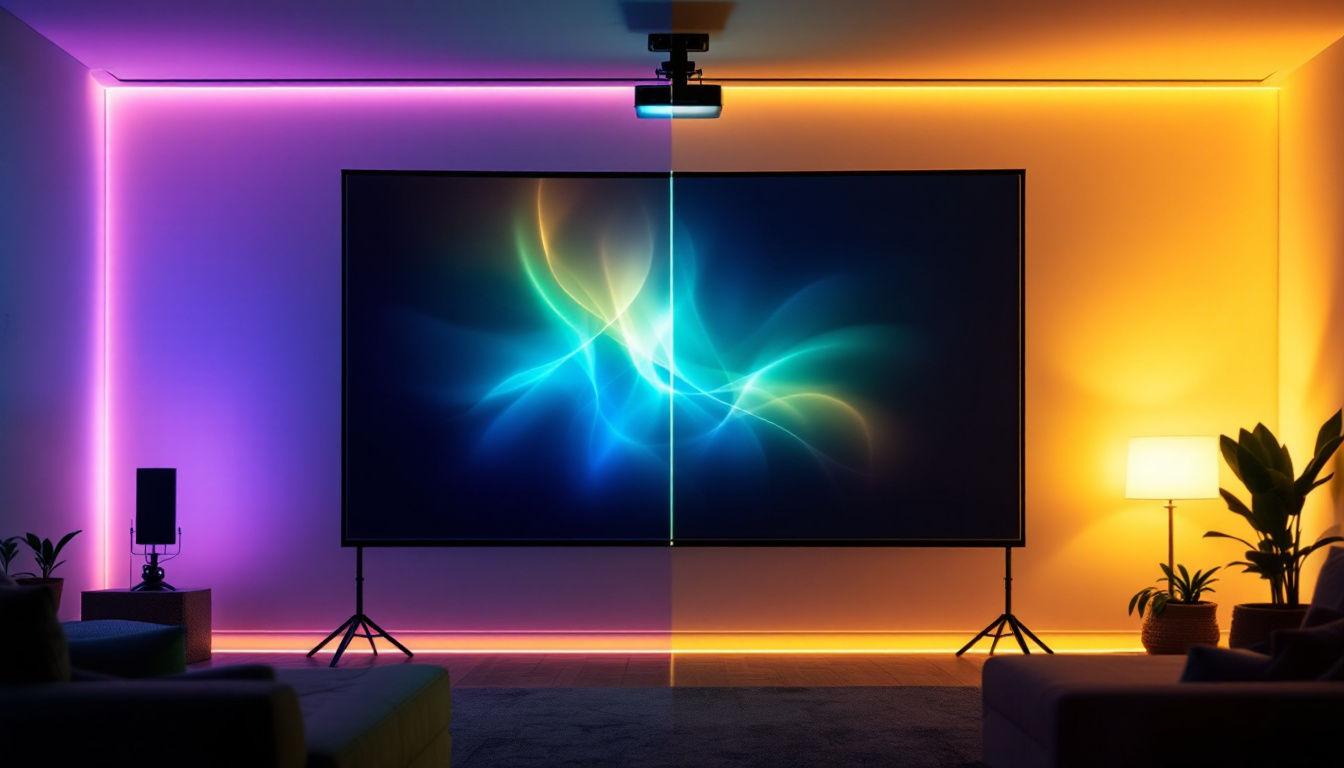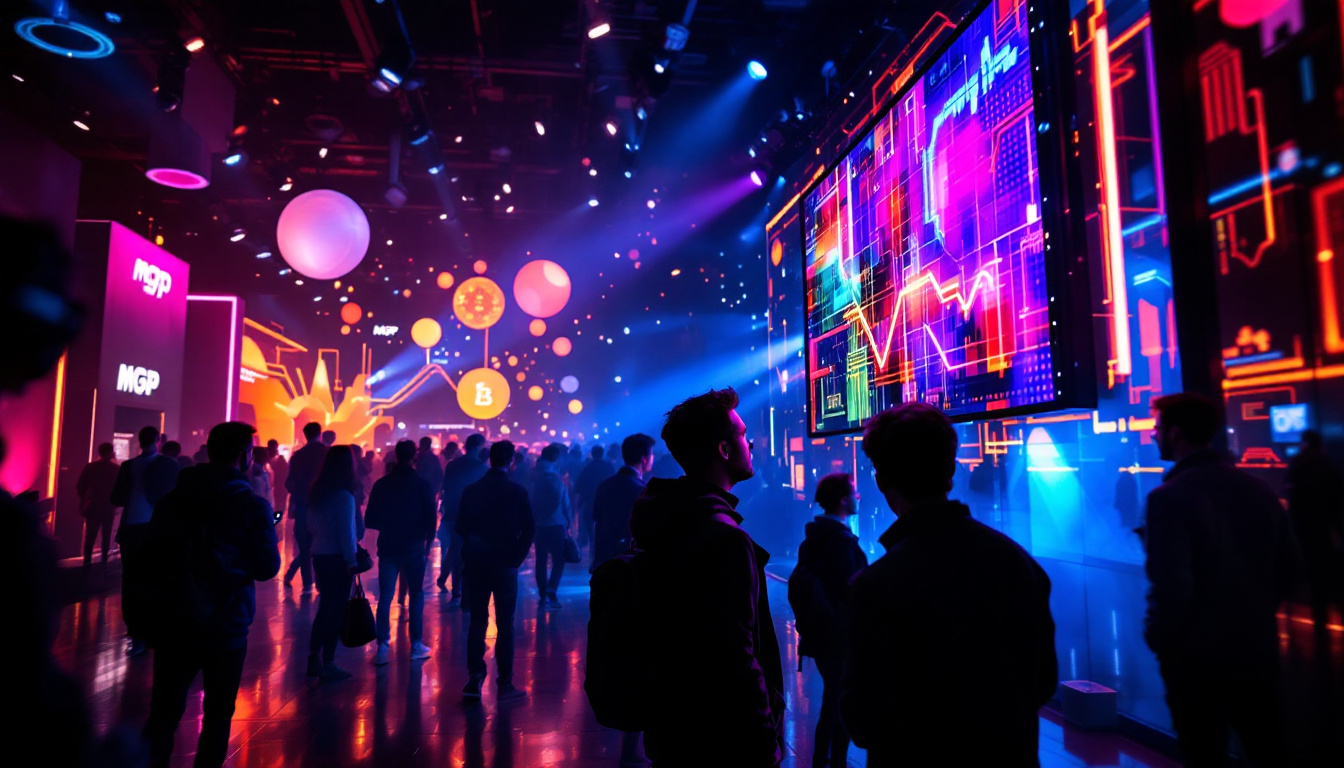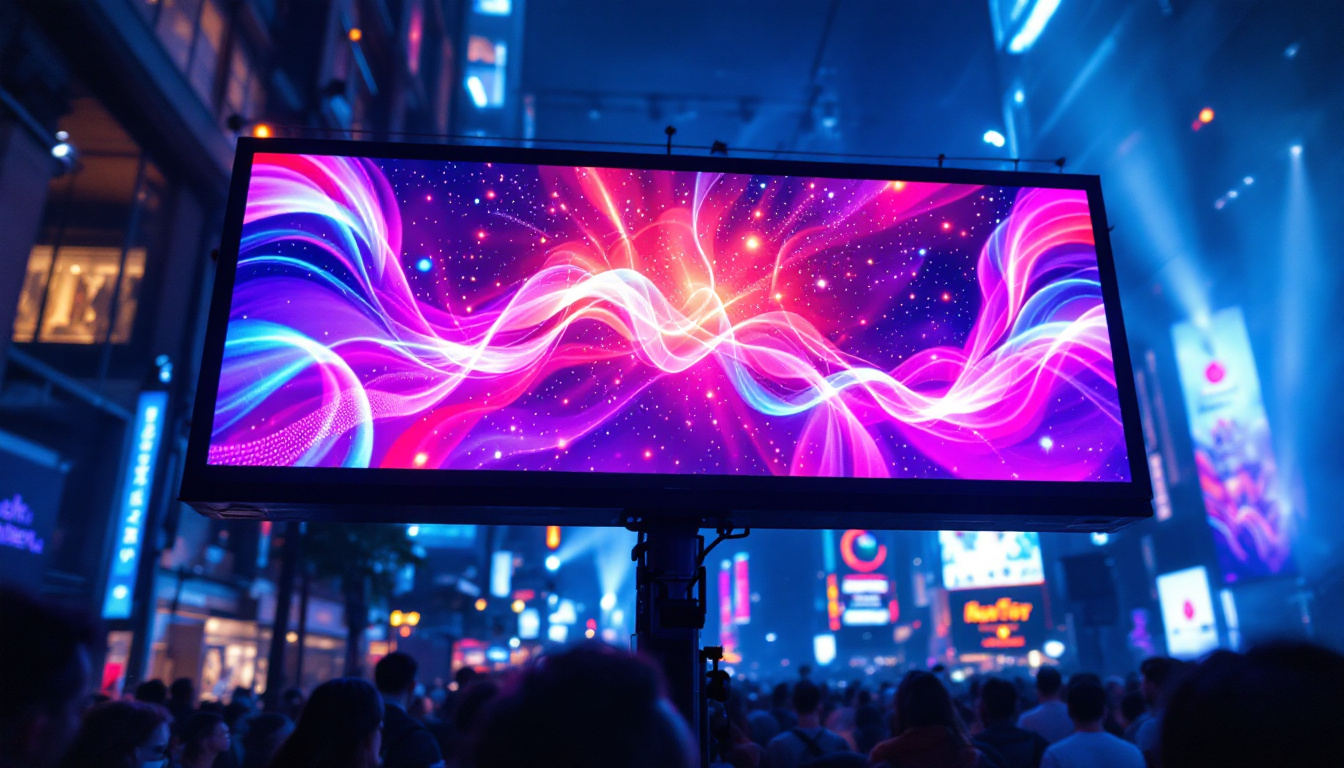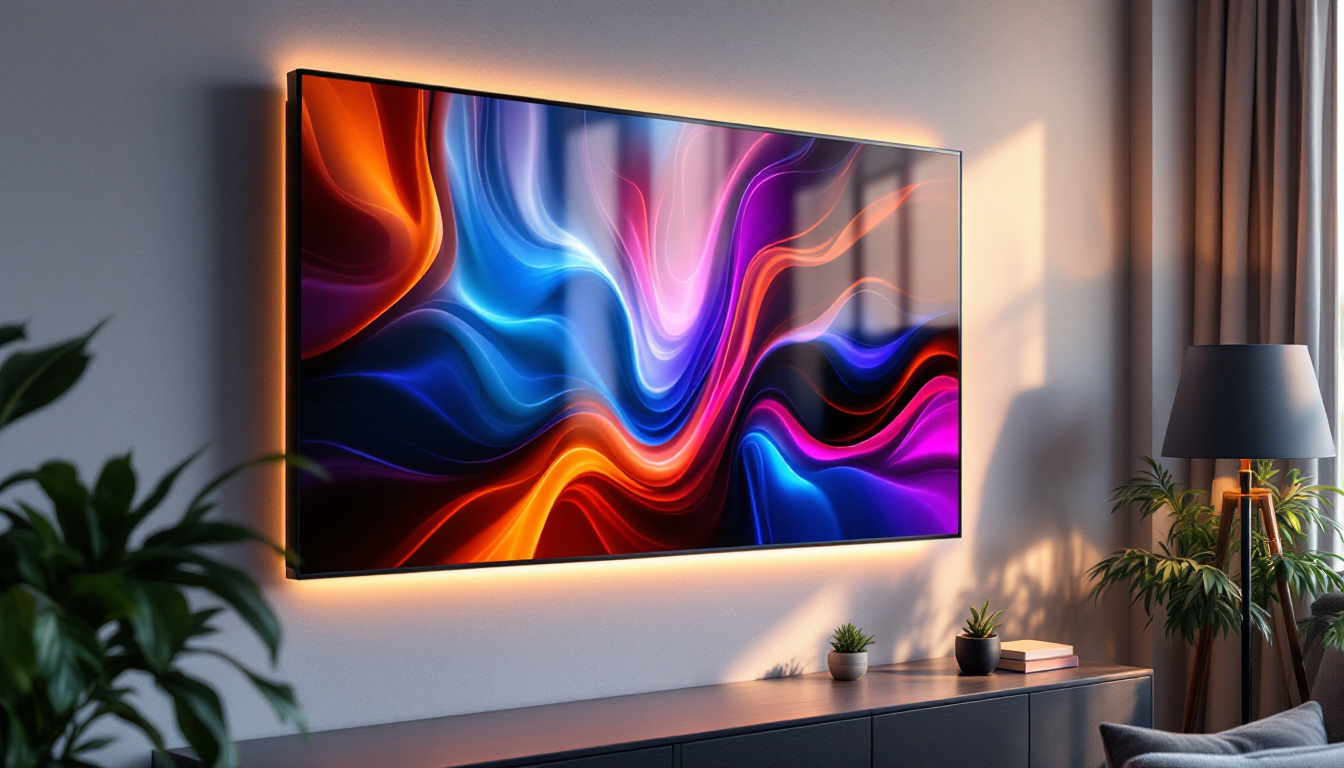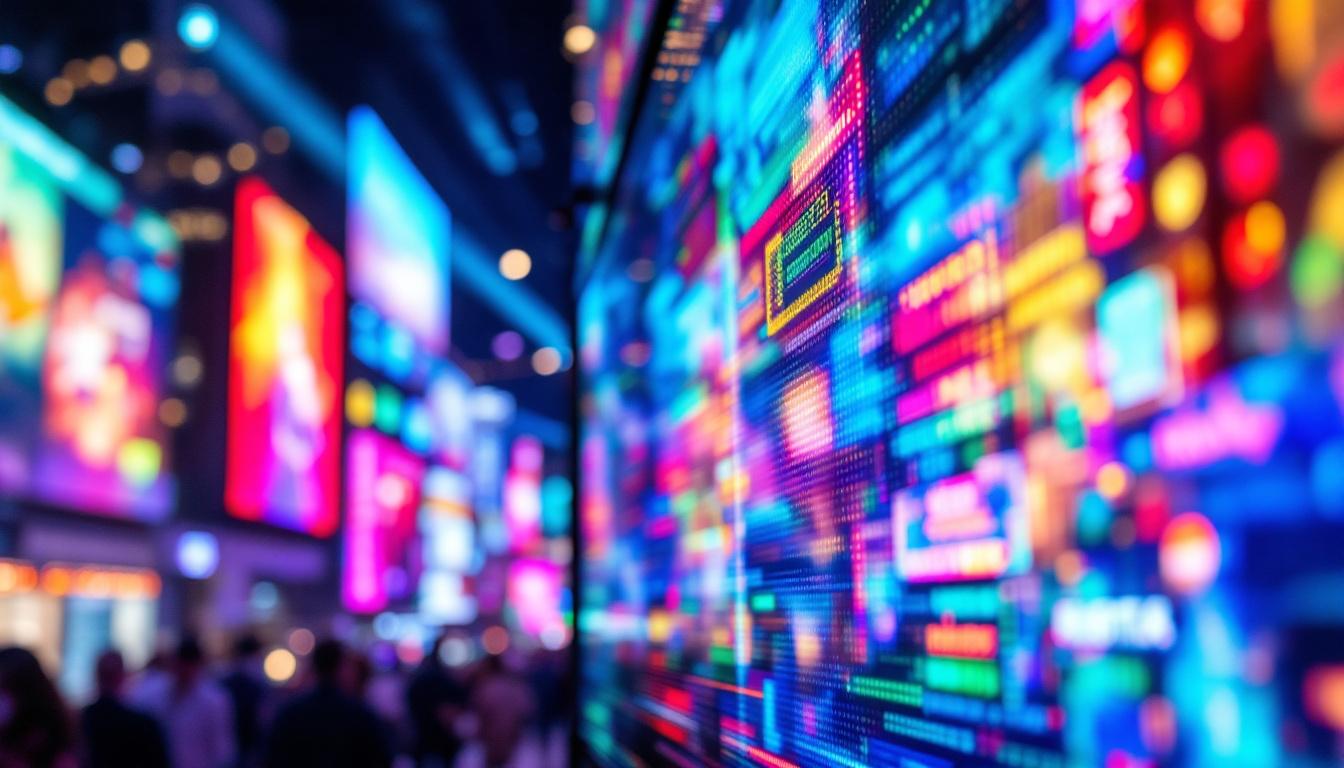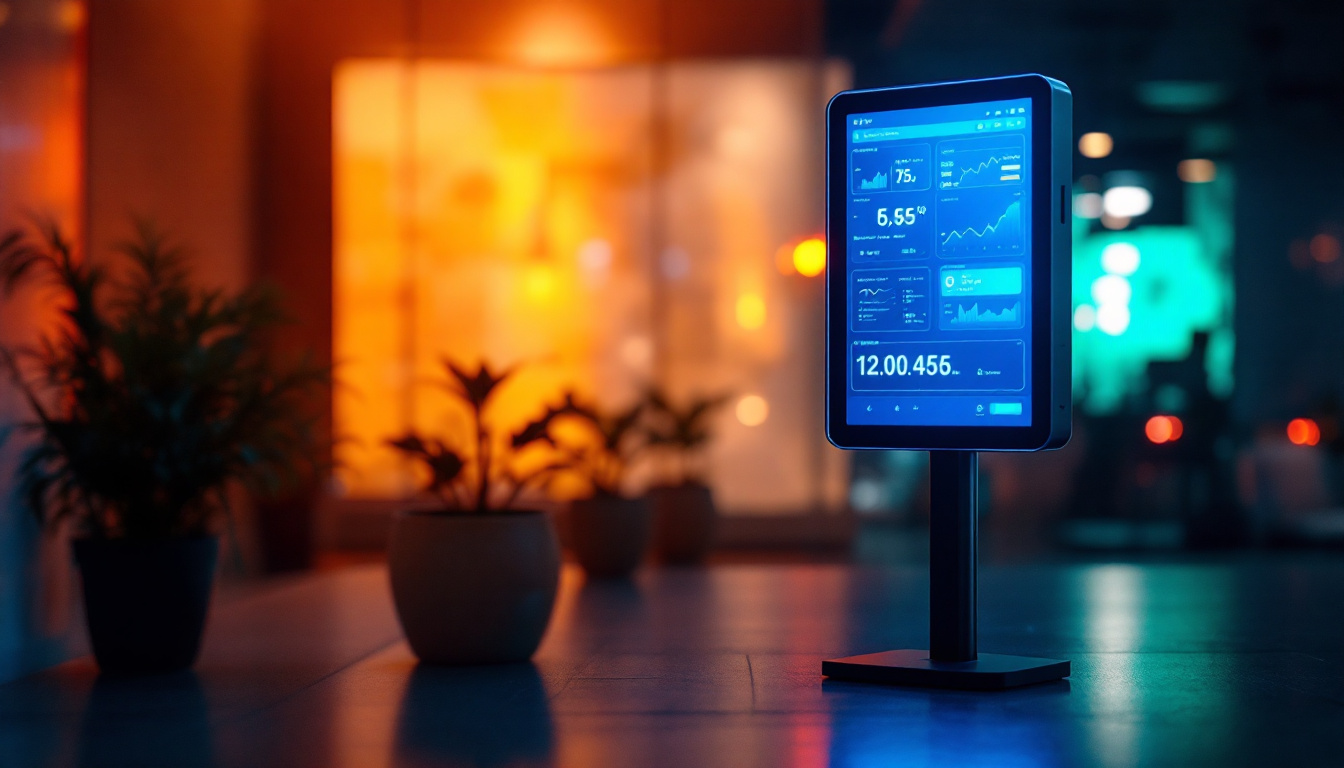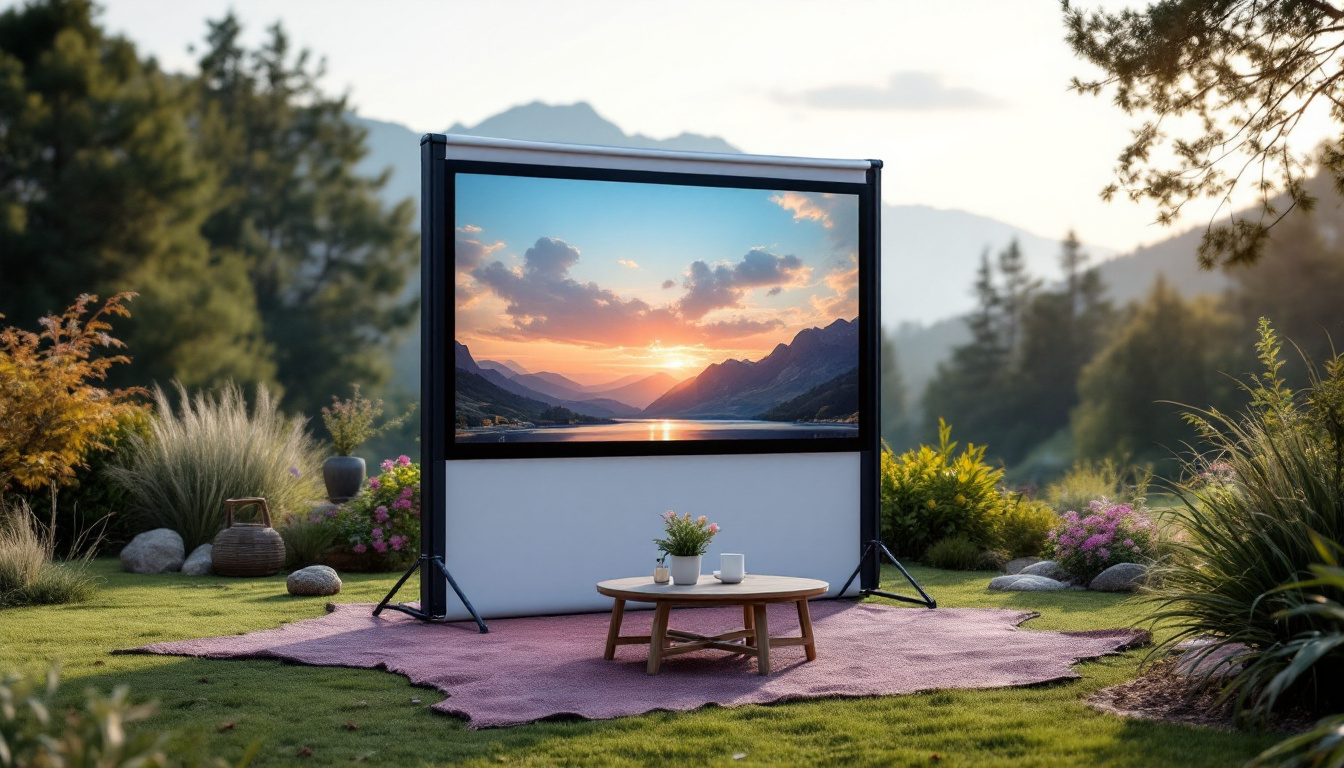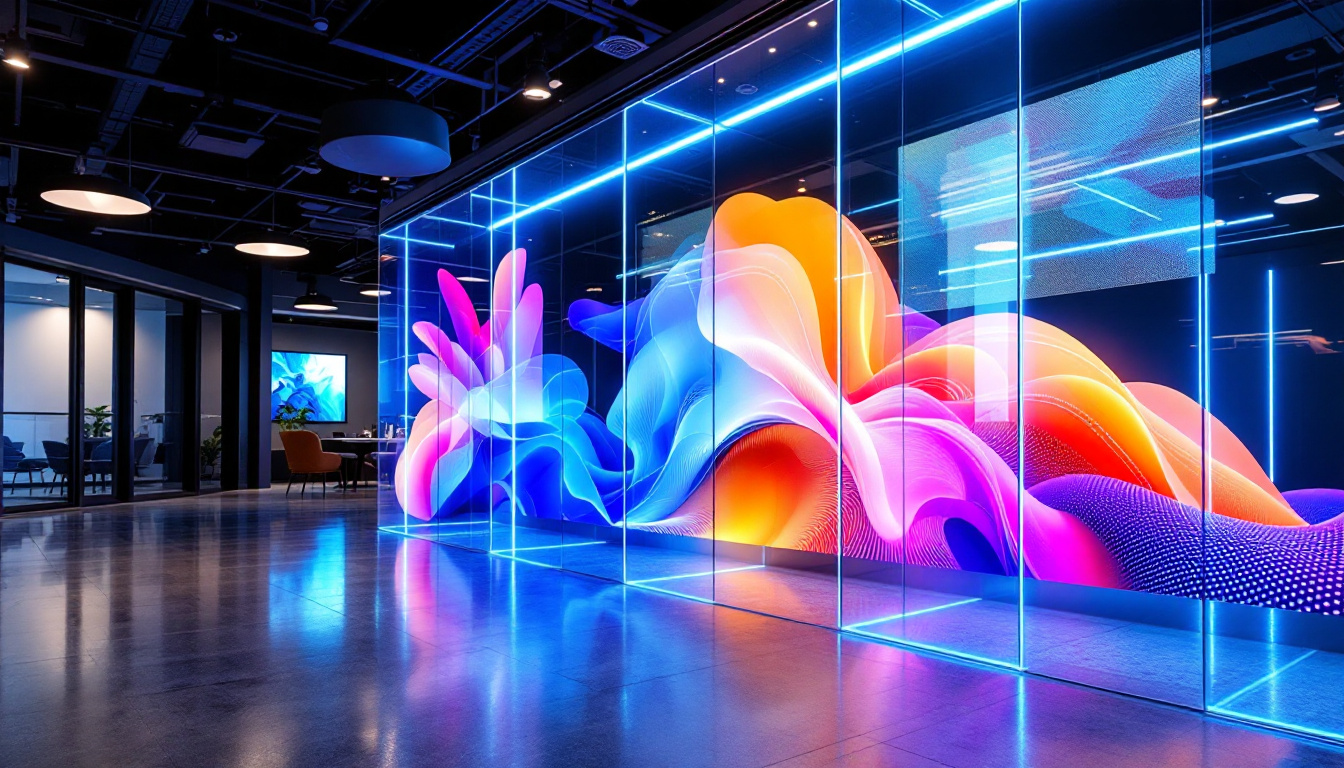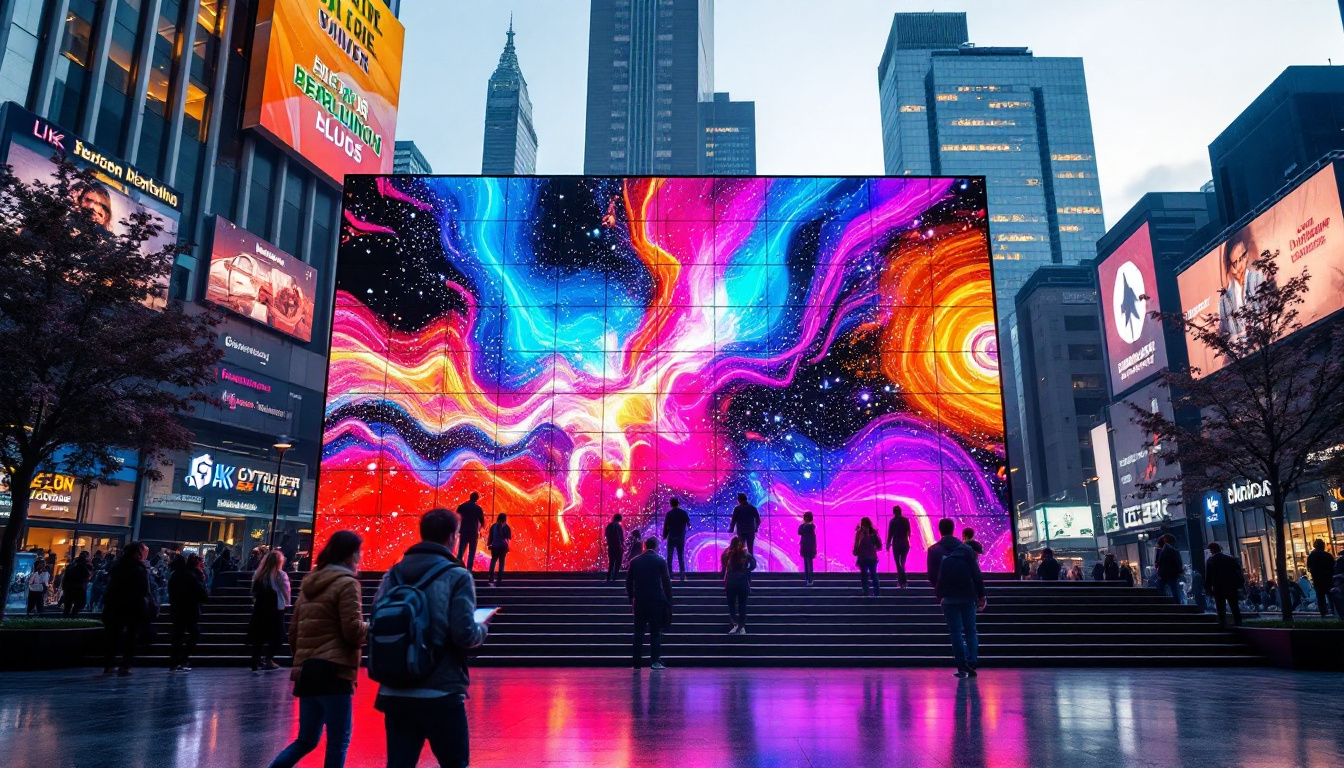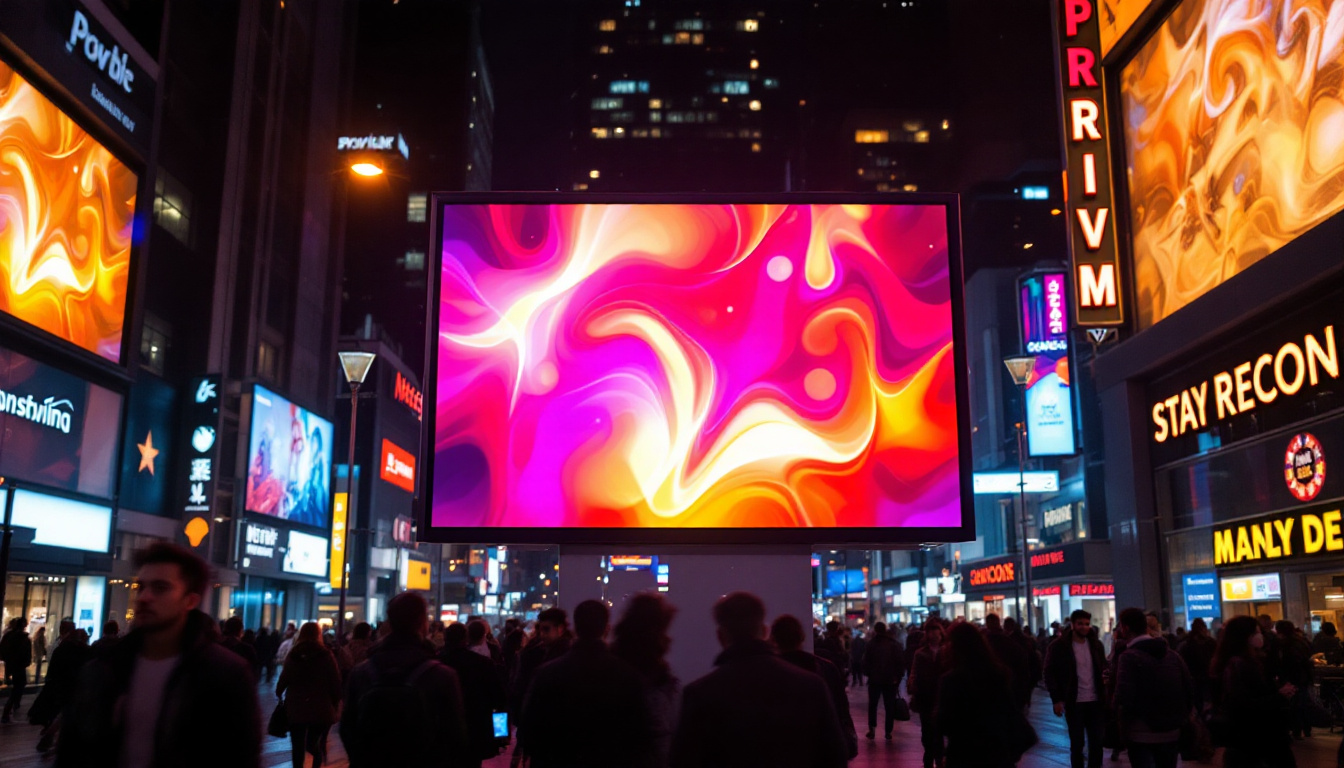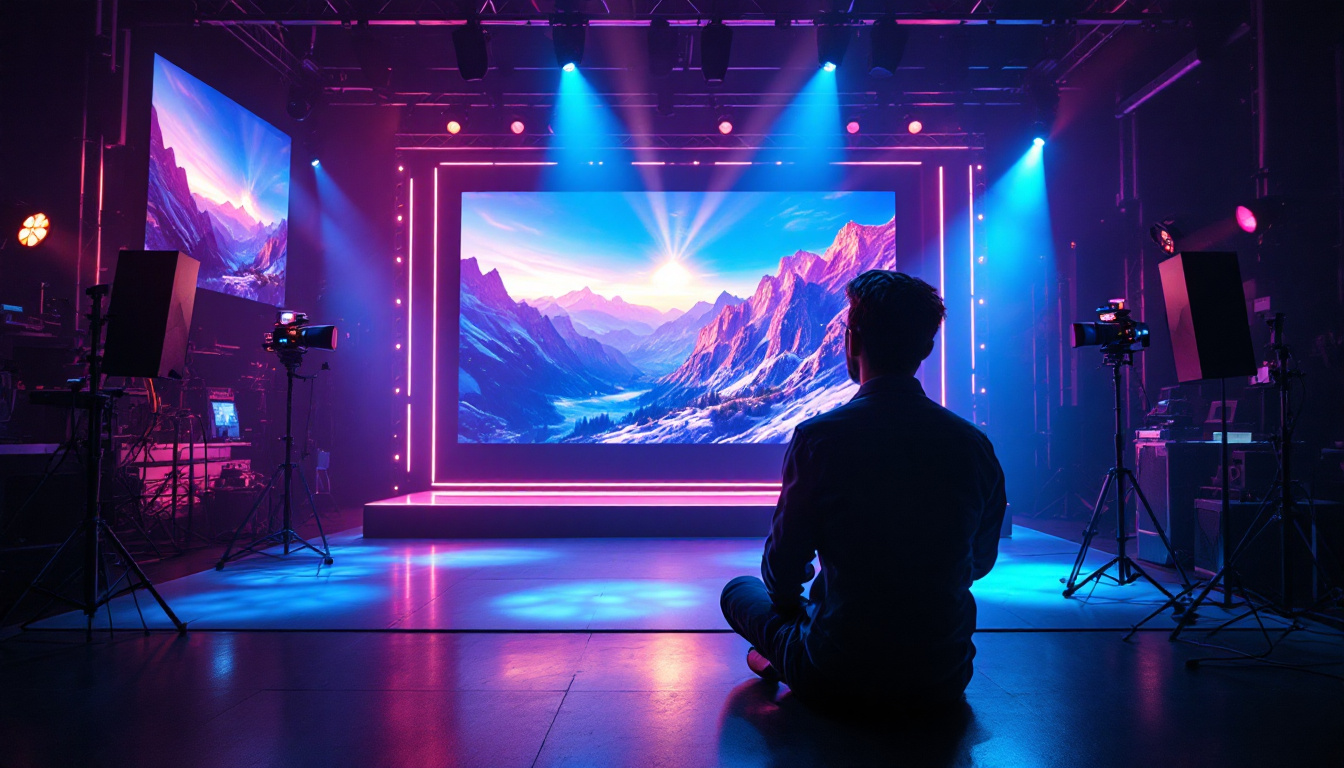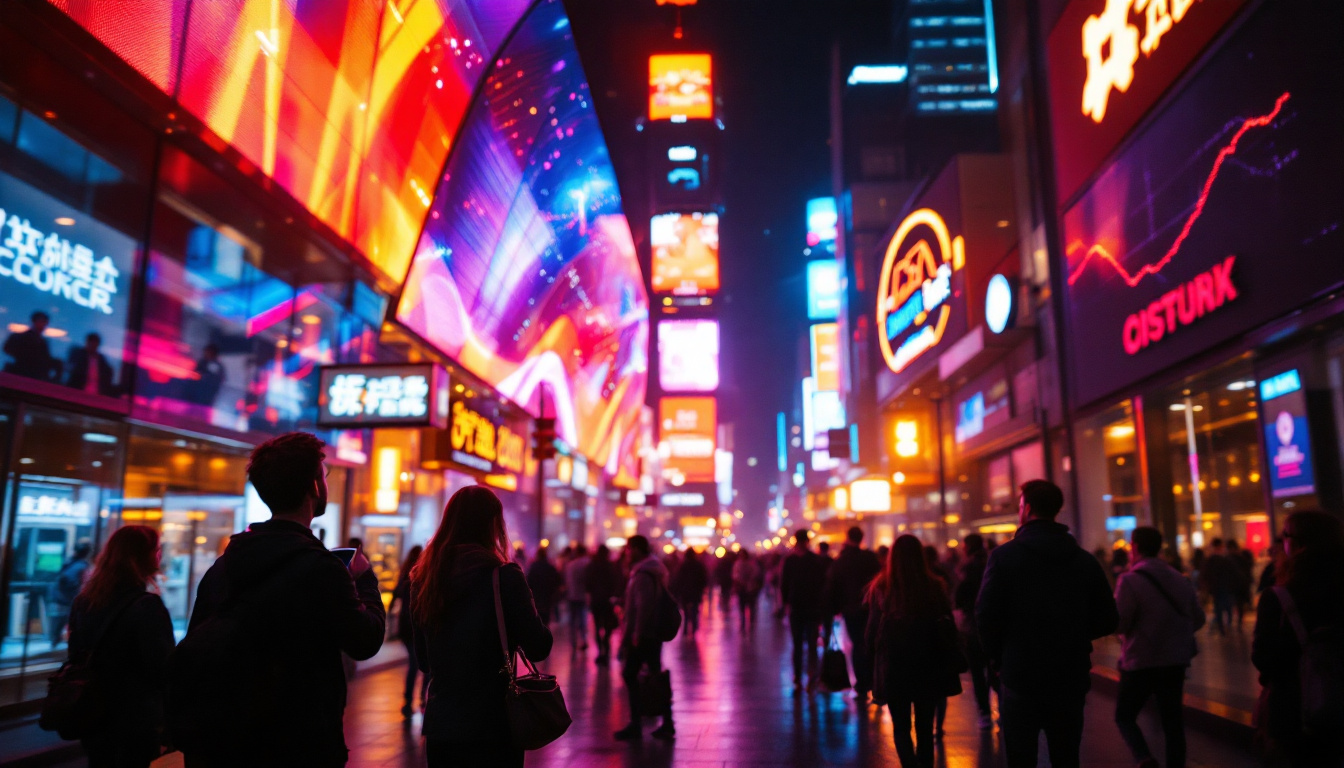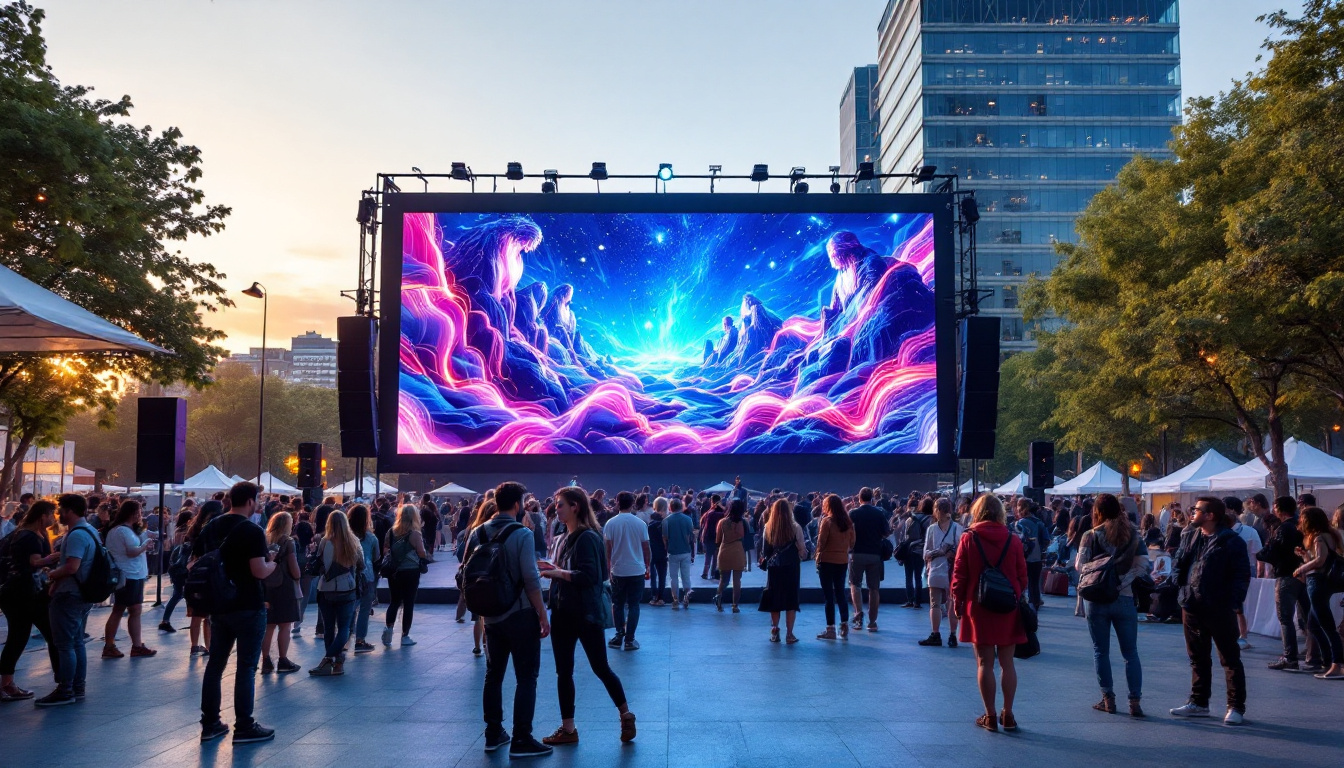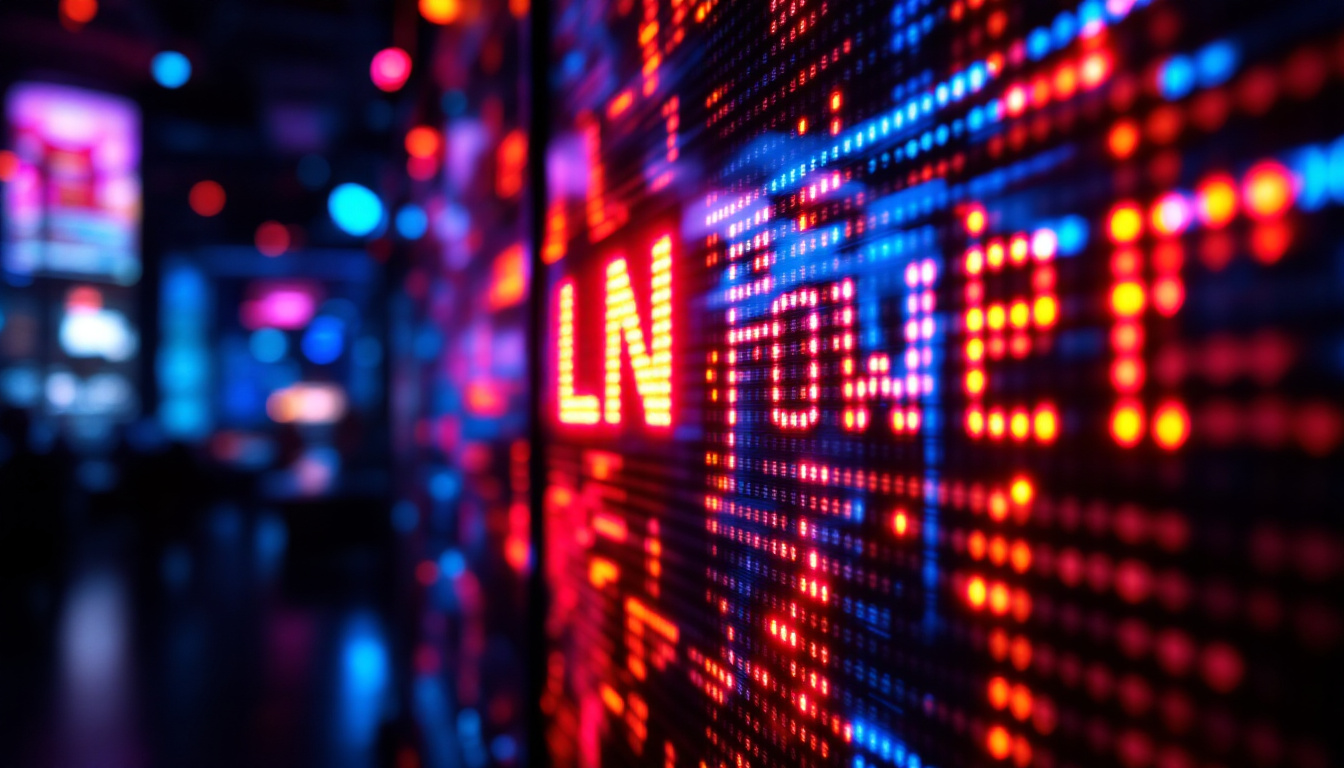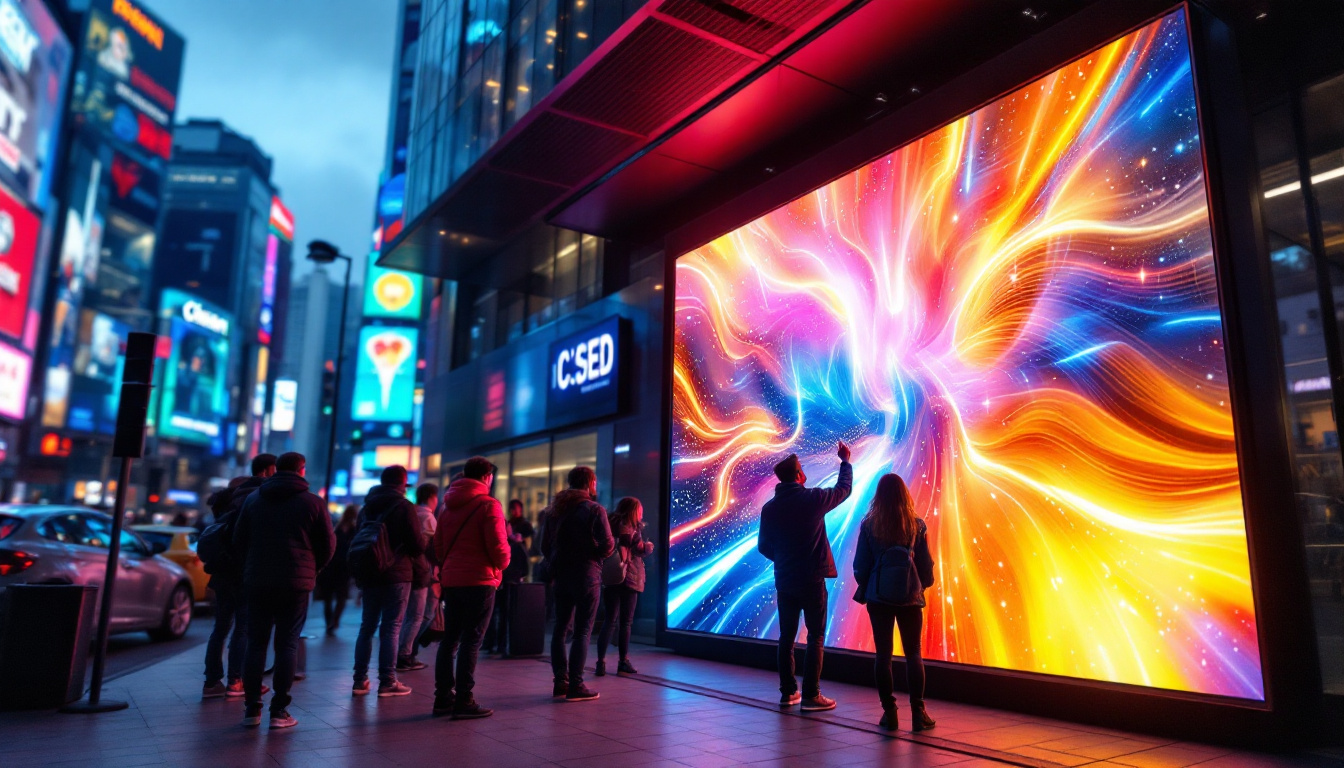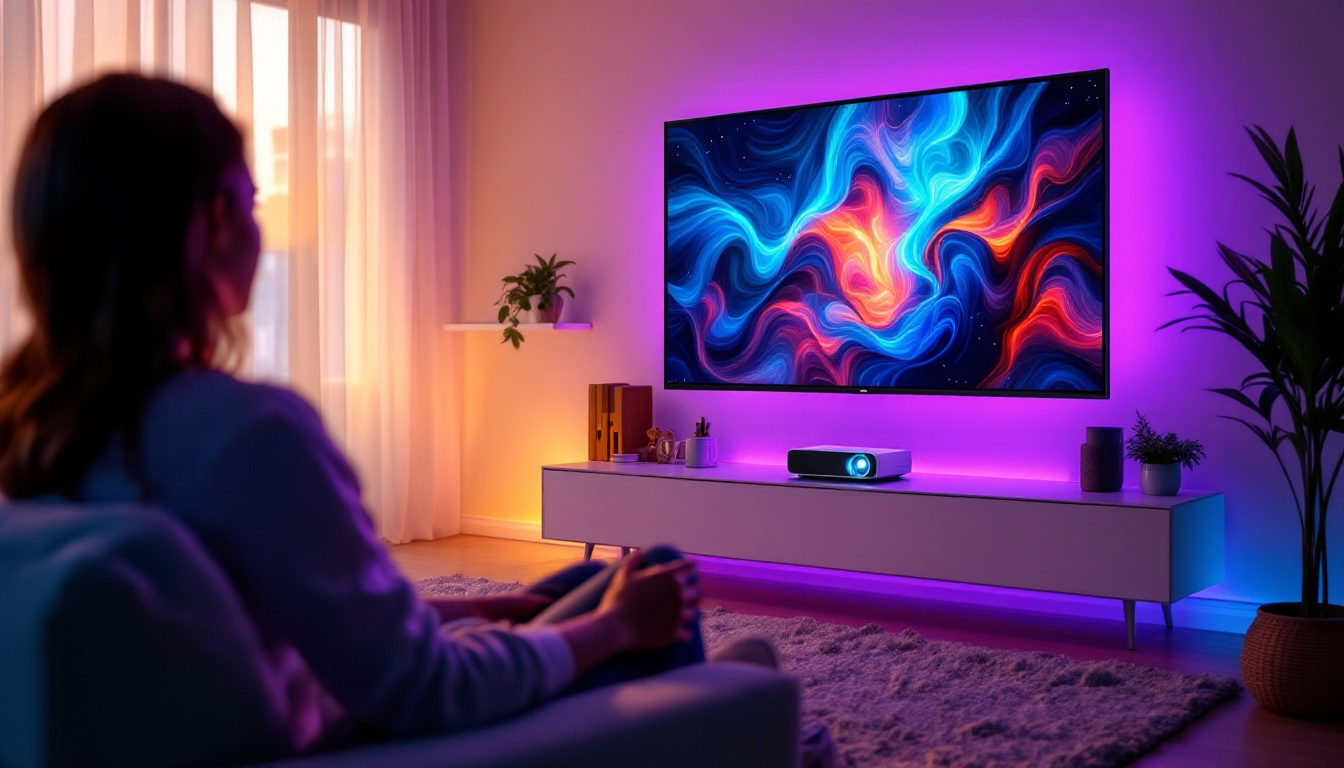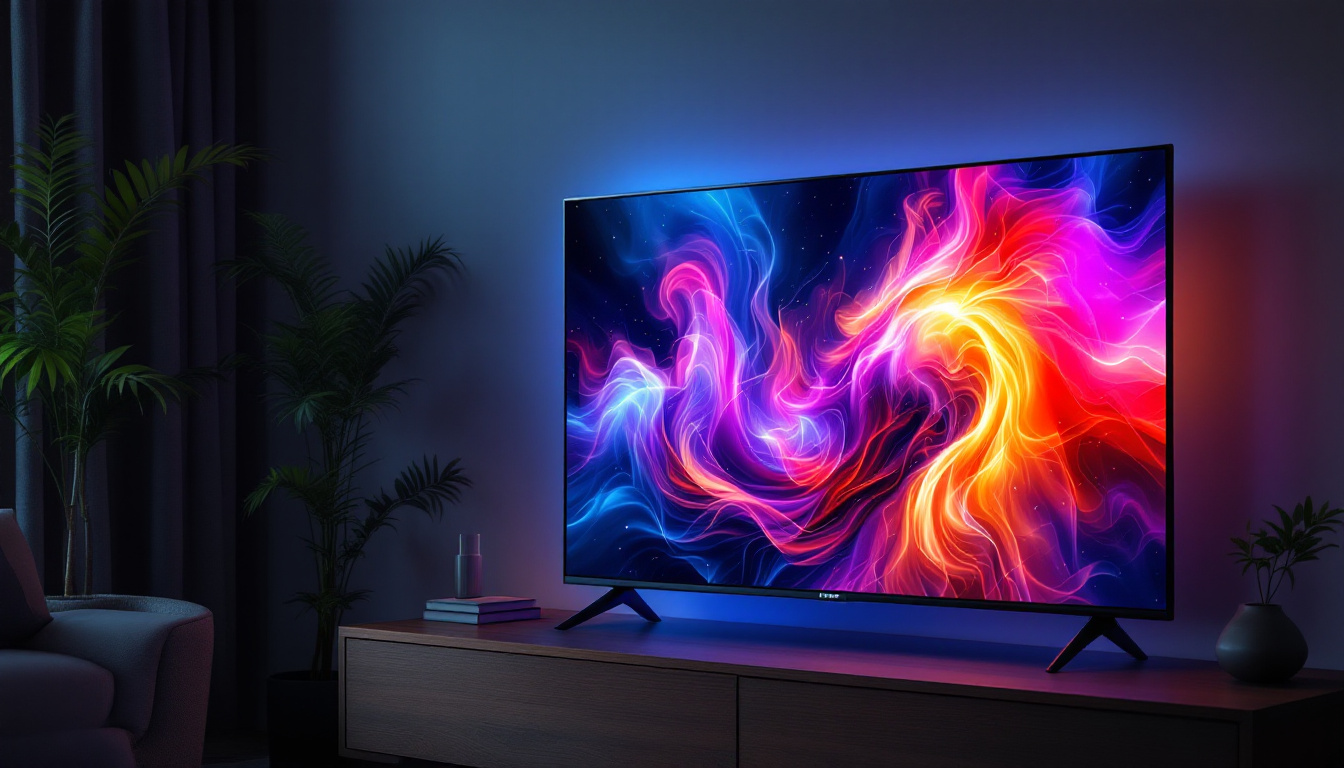The world of visual displays has undergone a remarkable transformation over the past few decades, with LED technology leading the charge. One of the most innovative applications of LED technology is the use of truss systems to create dynamic and versatile display setups. This article delves into the intricacies of truss systems and their role in enhancing LED displays, providing insights into their design, functionality, and applications.
Understanding Truss Systems
A truss system is a structural framework that is designed to support and distribute loads efficiently. Typically made from materials like aluminum or steel, trusses are used in various applications, including construction, bridges, and, notably, in the entertainment industry for supporting lighting and display equipment. Their design allows for a lightweight yet incredibly strong structure, making them a preferred choice in scenarios where both durability and weight considerations are paramount.
Components of a Truss System
Truss systems consist of several key components that work together to provide stability and support. The main elements include:
- Truss Beams: These are the primary structural elements that form the framework. They are usually triangular in shape, which provides strength and stability.
- Connectors: Connectors are used to join truss beams together, ensuring that the structure remains rigid and secure.
- Base Plates: These plates are essential for distributing the weight of the truss system and providing a stable foundation.
Each of these components plays a crucial role in ensuring that the truss system can safely support the weight of LED displays, lighting fixtures, and other equipment. Beyond their basic functions, the materials used in these components can also significantly affect the overall performance of the truss system. For instance, aluminum trusses are favored for their lightweight properties, while steel trusses are chosen for their superior strength and durability, particularly in outdoor applications where weather conditions can be a factor.
Types of Truss Systems
There are several types of truss systems, each designed for specific applications. The most common types include:
- Box Truss: This type features a square or rectangular cross-section and is widely used for larger displays due to its strength and stability.
- Triangle Truss: Characterized by its triangular shape, this truss is lightweight and often used for smaller setups.
- Curved Truss: Designed to create a curved display, this type is ideal for events that require a unique visual presentation.
Choosing the right type of truss system depends on the specific requirements of the event, including the size of the LED display and the venue’s layout. Additionally, the choice of truss can influence not only the aesthetic appeal of the setup but also the ease of assembly and disassembly. For example, curved trusses can create dynamic shapes that enhance the visual experience, while box trusses provide a more traditional and robust framework. Furthermore, advancements in truss technology have introduced modular designs, allowing for greater flexibility and customization in various setups, making it easier to adapt to different event themes and requirements.
The Role of LED Displays in Truss Systems
LED displays have revolutionized the way information is presented, offering vibrant colors, high brightness, and excellent visibility from various angles. When integrated with truss systems, LED displays can be elevated and positioned for maximum impact. This synergy not only enhances the aesthetic appeal of events but also transforms the way audiences engage with content, making it more dynamic and immersive.
Advantages of Using LED Displays
LED displays provide numerous advantages that make them a preferred choice for events and installations:
- High Brightness: LED technology ensures that displays remain visible even in bright environments, making them suitable for outdoor events.
- Versatility: LED displays can be configured in various shapes and sizes, allowing for creative presentations.
- Energy Efficiency: Compared to traditional display technologies, LEDs consume less power, making them more environmentally friendly.
These benefits make LED displays an ideal match for truss systems, enabling organizers to create stunning visual experiences that captivate audiences. Furthermore, the longevity of LED technology means that these displays can withstand the rigors of touring and outdoor use, reducing the need for frequent replacements and maintenance. This durability not only saves costs in the long run but also ensures that the visual integrity of events remains intact, regardless of the conditions.
Integration of LED Displays with Truss Systems
The integration of LED displays with truss systems involves several considerations:
- Weight Distribution: Proper weight distribution is crucial to ensure the stability of both the truss and the LED display.
- Rigging Techniques: Various rigging techniques are employed to secure the LED displays to the truss, ensuring safety and reliability.
- Power and Signal Management: efficient management of power and signal cables is essential to maintain a clean and organized setup.
By carefully planning the integration process, event organizers can create a seamless and visually appealing display that enhances the overall experience. Additionally, advancements in wireless technology have made it possible to reduce cable clutter, allowing for a more streamlined setup that not only looks professional but also minimizes the risk of tripping hazards. This innovation opens up new possibilities for creative staging, enabling displays to be placed in unconventional locations that maximize visibility and engagement.
Applications of Truss Systems with LED Displays
Truss systems equipped with LED displays are utilized in a wide range of applications across various industries. Their versatility allows for creative solutions in different settings.
Events and Concerts
One of the most prominent applications of truss systems with LED displays is in live events and concerts. These displays can be used to:
- Enhance stage visuals with dynamic backgrounds and real-time content.
- Provide information to the audience, such as schedules and artist details.
- Create immersive experiences through synchronized lighting and video displays.
The ability to create large-scale displays that can be seen from a distance makes truss systems with LED displays indispensable in the entertainment industry.
Corporate Events and Trade Shows
In the corporate world, truss systems with LED displays serve several purposes:
- Showcasing products and services in an engaging manner.
- Delivering presentations and keynote speeches with visual aids.
- Creating branded environments that enhance the company’s image.
These displays can be customized to fit the theme of the event, ensuring that they resonate with the target audience.
Architectural Installations
Beyond events, truss systems with LED displays are increasingly being used in architectural installations. Applications include:
- Building facades that incorporate LED screens for advertising or artistic displays.
- public art installations that utilize LED technology to engage viewers.
- Interactive displays in museums and galleries that enhance visitor experiences.
These innovative applications demonstrate the potential of combining truss systems with LED displays to create visually stunning installations that captivate audiences.
Design Considerations for Truss Systems with LED Displays
When designing a truss system for LED displays, several factors must be taken into account to ensure safety, functionality, and aesthetic appeal.
Load Capacity
Understanding the load capacity of the truss system is critical. This involves calculating the weight of the LED display, along with any additional equipment such as lighting fixtures or sound systems. Overloading a truss can lead to structural failure, posing safety risks.
Height and Positioning
The height and positioning of the truss system are also important considerations. A higher placement can enhance visibility, but it also requires careful planning to ensure that the display is securely rigged and that audience sightlines are not obstructed. Additionally, the positioning should allow for easy access for maintenance and adjustments.
Aesthetics and Branding
Finally, the aesthetic aspect of the truss system should not be overlooked. The design should complement the overall theme of the event or installation. Custom finishes, lighting effects, and branding elements can be incorporated to create a cohesive visual experience that resonates with the audience.
Future Trends in Truss Systems and LED Displays
The integration of truss systems and LED displays is continuously evolving, with new technologies and trends emerging. Understanding these trends can help event organizers and designers stay ahead of the curve.
Advancements in LED Technology
As LED technology continues to advance, displays are becoming lighter, thinner, and more energy-efficient. This evolution allows for more innovative designs and applications, enabling truss systems to support even more complex and visually striking displays.
Smart Technology Integration
The rise of smart technology is also influencing the design and functionality of truss systems. Features such as remote monitoring, automated adjustments, and data analytics are becoming more common, allowing for enhanced control and optimization of displays during events.
Sustainability Considerations
With growing awareness of environmental issues, sustainability is becoming a key consideration in the design of truss systems and LED displays. This includes using eco-friendly materials, energy-efficient technologies, and practices that reduce waste.
Conclusion
Truss systems play a vital role in the effective deployment of LED displays, enabling dynamic and engaging visual experiences across various applications. By understanding the components, advantages, and design considerations associated with truss systems, event organizers and designers can create stunning displays that leave a lasting impression on audiences.
As technology continues to evolve, the integration of truss systems and LED displays will undoubtedly lead to even more innovative solutions, pushing the boundaries of what is possible in visual presentation. Embracing these advancements will be key to staying relevant in an ever-changing landscape.
Discover LumenMatrix’s Innovative LED Solutions
Ready to elevate your visual presentations to the next level? LumenMatrix is at the forefront of LED display technology, offering a wide array of solutions that bring your brand to life. From immersive Indoor LED Walls to eye-catching Outdoor Displays and beyond, our products are designed to captivate and engage your audience. Experience the future of visual communication with our LED Sports Displays, Floor LEDs, and Custom Displays tailored to your unique needs. Don’t miss the opportunity to transform your message with clarity and impact. Check out LumenMatrix LED Display Solutions today and see the difference innovation can make.

